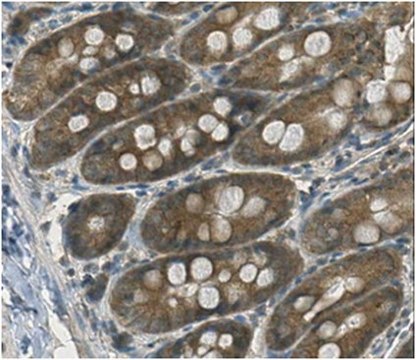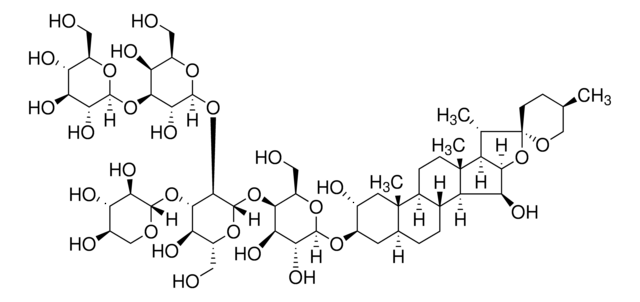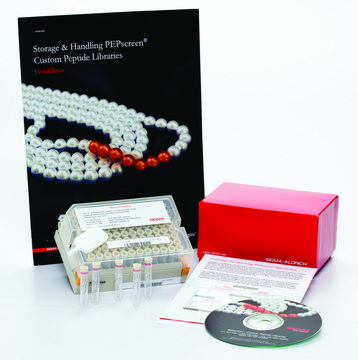All Photos(1)
About This Item
Empirical Formula (Hill Notation):
C195H296N54O56
Molecular Weight:
4292.76
MDL number:
UNSPSC Code:
12352209
NACRES:
NA.32
Recommended Products
Amino Acid Sequence
Tyr-Pro-Ile-Lys-Pro-Glu-Ala-Pro-Gly-Glu-Asp-Ala-Ser-Pro-Glu-Glu-Leu-Asn-Arg-Tyr-Tyr-Ala-Ser-Leu-Arg-His-Tyr-Leu-Asn-Leu-Leu-Thr-Arg-Pro-Arg-Tyr-NH2
Biochem/physiol Actions
Agonist at Y1, Y4, and Y5 NPY receptors.
Storage Class
11 - Combustible Solids
wgk_germany
WGK 3
flash_point_f
Not applicable
flash_point_c
Not applicable
ppe
Eyeshields, Gloves, type N95 (US)
Choose from one of the most recent versions:
Already Own This Product?
Find documentation for the products that you have recently purchased in the Document Library.
Y Dumont et al.
Canadian journal of physiology and pharmacology, 78(2), 116-125 (2000-03-29)
We have evaluated 3 newly developed neuropeptide Y receptor antagonists in various in vitro binding and bioassays: BIBO3304 (Y1), T4[NPY33-36]4 (Y2), and CGP71683A (Y5). In rat brain homogenates, BIBO3304 competes for the same population of [125I][Leu31,Pro34] peptide YY (PYY) binding
Ross A Carson et al.
PloS one, 13(5), e0196387-e0196387 (2018-05-09)
Statins inhibit HMG-CoA reductase, the rate-limiting enzyme in the cholesterol biosynthesis pathway (CBP), and are used for the prevention of cardiovascular disease. The anti-inflammatory effects of statins may also provide therapeutic benefits and have led to their use in clinical
L Ferrier et al.
Gut, 46(3), 370-375 (2000-02-15)
Peptide YY (PYY) is involved in the regulation of several gut functions, including secretion and motility. It exerts its effects through a family of six receptors, commonly named the Y receptor family. To characterise the effects of PYY on strips
M Gobbi et al.
Journal of neurochemistry, 72(4), 1663-1670 (1999-03-31)
125I-[Leu31,Pro34]peptide YY (PYY) and 125I-PYY3-36, initially described as selective neuropeptide Y Y1 and Y2 receptor ligands, respectively, were recently shown to label also Y4 and Y5 receptors. We used receptor autoradiography to assess whether these ligands can be reliably used
Xiaohong Yang et al.
Frontiers in bioengineering and biotechnology, 8, 468-468 (2020-06-18)
Effective clinical treatments of cartilage lesions in affected joints require large numbers of viable chondrogenic cells generated through in vivo stimulation or ex vivo expansion of chondrocytes isolated from small biopsy specimens. Conventional passaging of chondrocytes in culture provides sufficient
Our team of scientists has experience in all areas of research including Life Science, Material Science, Chemical Synthesis, Chromatography, Analytical and many others.
Contact Technical Service








